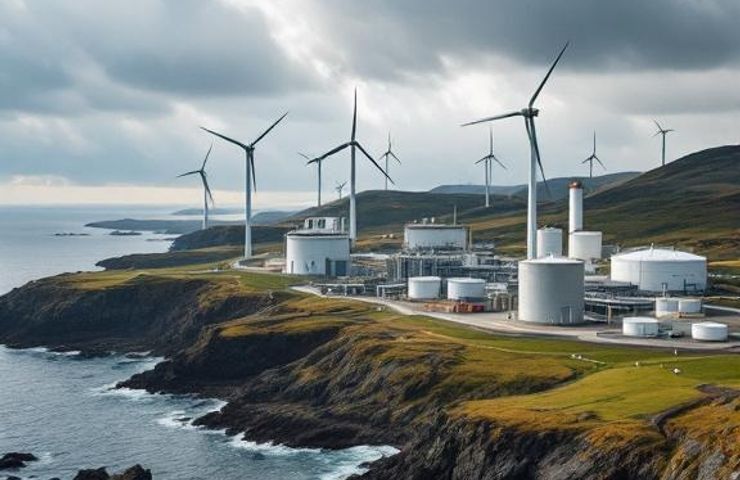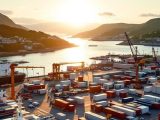
Green Hydrogen Production Takes Root in Shetland with Statkraft’s 400MW Ammonia Plant
November 6, 2025Ever daydreamed about Shetland’s wild, windswept shores firing up the next wave of sustainable energy? That’s exactly the bold vision Statkraft is chasing. Fresh off signing a land lease by Scatsta Airport, Europe’s largest renewable energy generator is revving up the Shetland Hydrogen Project 2: a 400MW electrolytic hydrogen-to-green ammonia plant.
From Gusty Isles to Green Molecules
Just a stone’s throw from the Sullom Voe Oil Terminal and Shetland Gas Plant, this scheme taps into some of the UK’s most powerful winds. When turbines spin too fast for the grid, that surplus juice will feed giant electrolyzers that split water into hydrogen and oxygen. Next stop: a slick Haber–Bosch loop, where hydrogen morphs into clean ammonia (NH3)—perfect for marine fuel, fertilizer feedstock or as a next-level energy carrier.
Backing and Business Logic
But this isn’t a lone wolf project. The Shetland Islands Council has handed over the site, and Scottish Enterprise is chipping in from a £3.4 million pot to turbocharge green hydrogen plans across Scotland. For Statkraft, it’s part of a bigger play. Born from Norway’s hydropower, the company is weaving wind, solar and flexible fuels into one seamless portfolio.
Here on Shetland, where nearly 23,000 islanders once depended almost entirely on oil and gas, the goal is clear: diversify the local economy. Sullom Voe may have powered the islands for decades, but now it’s high time to leverage existing skills and infrastructure for cleaner, longer-lasting energy ventures.
Why Green Ammonia Matters
Ammonia has quietly become a heavyweight in the race for industrial decarbonization. Unlike plain hydrogen, which can be a real headache to store and ship, clean ammonia slides into tried-and-true logistics networks—from fertilizer silos to bulk carriers—without missing a beat. And when it’s burned or cracked back into hydrogen, the only thing you get is energy—no carbon dioxide in sight.
“By turning unpredictable wind into a transportable molecule, we unlock hydrogen’s potential far beyond the grid,” says a Statkraft spokesperson. This is squarely aimed at hard-to-crack sectors like maritime shipping and fertilizer production, where plugging in a battery just won’t cut it.
Wind Farms in the Wings
Long before those huge electrolyzers spring to life, three Statkraft wind farms—Mossy Hill, Energy Isles and Beaw Field—are already in pre-construction on Shetland. Together, they’ll feed clean power straight into the hydrogen plant. It’s a tidy little loop: local wind fuels local hydrogen production, which then fuels industries around the world.
Economic and Environmental Ripples
This project’s impact goes well beyond direct jobs in construction and ops. Fabrication yards, logistics outfits and maintenance crews across Shetland could see a real boost. As North Sea oil revenues wane, green hydrogen schemes like this might become the new economic bedrock. On the environmental front, drawing water for electrolysis requires careful management of both freshwater and coastal sources. Statkraft will need to nail down planning consents, marine permits and community buy-in to keep shorebirds and shorelines safe.
Still, the upside is huge. The UK aims to crank out 5 GW of low-carbon hydrogen by 2030, and projects like this are exactly what’ll push the nation towards its industrial decarbonization goals, proving that offshore winds can power far more than just turbines—they can power a whole shift in how we fuel our world.
Looking Ahead
Construction is penciled in for the second half of the decade, once final permits and offtake deals are nailed down. Who’ll snap up the clean ammonia? Think shipping companies hunting zero-emission bunkers, fertilizer giants after a greener feedstock, and even power generators eyeing ammonia as their seasonal storage ace.
Next time you spot those slender blades slicing through grey Shetland skies, remember: green hydrogen and clean ammonia aren’t just fancy buzzwords. They’re the vital links binding wind to industry, islands to global markets. And in Shetland’s windswept expanse, Statkraft’s project could be the blueprint for similar hubs everywhere.
About Statkraft: Statkraft is Europe’s largest producer of renewable energy, owned by the Norwegian state. With roots in hydropower stretching back over a century, the company now develops wind, solar, green hydrogen and clean ammonia projects across the globe, driving the transition to a truly sustainable energy future.


 With over 15 years of reporting hydrogen news, we are your premier source for the latest updates and insights in hydrogen and renewable energy.
With over 15 years of reporting hydrogen news, we are your premier source for the latest updates and insights in hydrogen and renewable energy.